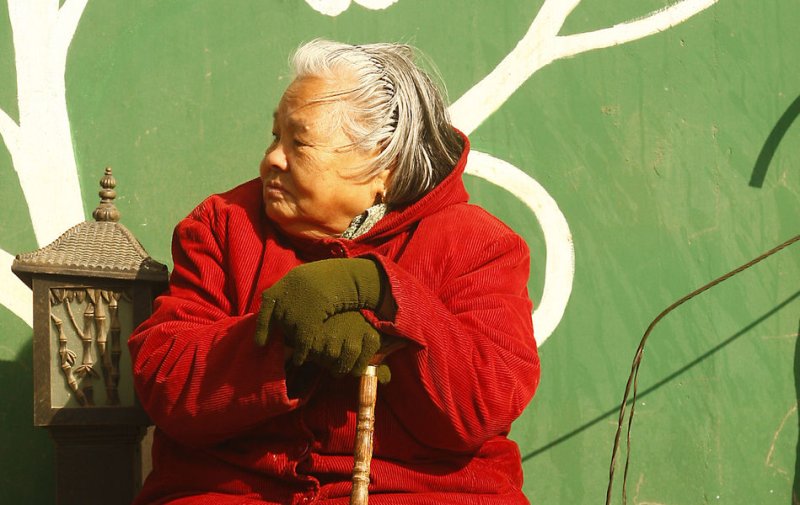1 of 2 | An elderly Chinese woman sits in the midday sun in downtown Beijing March 11, 2011. UPI/Stephen Shaver |
License Photo
CHICAGO, Feb. 6 (UPI) -- Due to an error in computation, the odds of living to a ripe old age in the United States are much lower than previously thought, researchers said.
Leonid A. Gavrilov and Natalia S. Gavrilova of NORC at the University of Chicago, formerly known as the National Opinion Research Center, said the findings contradict a long-held belief that the mortality rate of Americans flattens out after age 80.
The researchers' work explains why the U.S. Census Bureau was wrong when it predicted six years ago that there would be 114,000 centenarians in the country by 2010 when the actual number turned out to be half that at 53,364.
The findings were based on accurate information about the date of birth and the date of death of more than 9 million Americans born from 1875 to 1895 from the Social Security Administration Death Master File.
"It is a remarkable resource that allowed us to build what is called an extinct birth cohort that corrects or explains a number of misunderstandings about the mortality rate of our oldest citizens," the researchers said in a statement.
The study, published in the North American Actuarial Journal, found the rate of mortality growth with age of the oldest Americans is the same as that for those who are younger.
The mortality rate for those ages 30-80 follows Gompertz Law, named for Benjamin Gompertz, who observed in 1825 that a person's risk of death in a given year doubles every eight years of age.
The Gavrilovs found Gompertz Law holds at least through age 106, and probably higher, but the researchers said mortality data for those older than 106 is unreliable.















